This Article has been revised, edited and added to, by Poulomi Chakraborty.
- LinkedIn and Healthcare SEO: An Overview
- Comparison: LinkedIn vs. Other Social Media Platforms in Healthcare SEO
- LinkedIn Profile Optimization for Healthcare Professionals
- Leveraging LinkedIn for Content Marketing in Healthcare
- Building Thought Leadership on LinkedIn
- Optimizing LinkedIn for Local SEO in Healthcare
- Creating High-Quality Backlinks through LinkedIn
- Using LinkedIn Analytics to Refine Your SEO Strategy
- LinkedIn's Role in Healthcare Thought Leadership
- LinkedIn Strategies for Healthcare Practices
- LinkedIn Advertising for Healthcare SEO
- Leveraging LinkedIn Groups for Community Building
- LinkedIn as a Tool for Professional Development in Healthcare
- LinkedIn Analytics: Tracking and Improving Your Impact
- Experts Opinion
- Conclusion
In today’s digital age, where information is readily accessible and competition is fierce, businesses must adapt to stay relevant. This is especially true for the healthcare industry. Whether you’re a solo practitioner, part of a large medical group, or working for a healthcare facility, having a strong online presence is crucial. Among various digital platforms, LinkedIn stands out as a powerful tool for healthcare professionals and organizations to enhance their online visibility and improve their search engine optimization (SEO).
LinkedIn, often regarded as the professional social network, is more than just a platform for job seekers and recruiters. It’s a robust space for building professional networks, sharing valuable content, and establishing thought leadership. For healthcare professionals, LinkedIn provides a unique opportunity to connect with peers, share insights, and attract potential patients.
But why is LinkedIn so important for healthcare SEO? How can a platform traditionally associated with networking and job searches help boost your website’s search engine rankings? This article delves into the significance of LinkedIn in healthcare SEO, offering actionable strategies to leverage the platform effectively.
LinkedIn and Healthcare SEO: An Overview
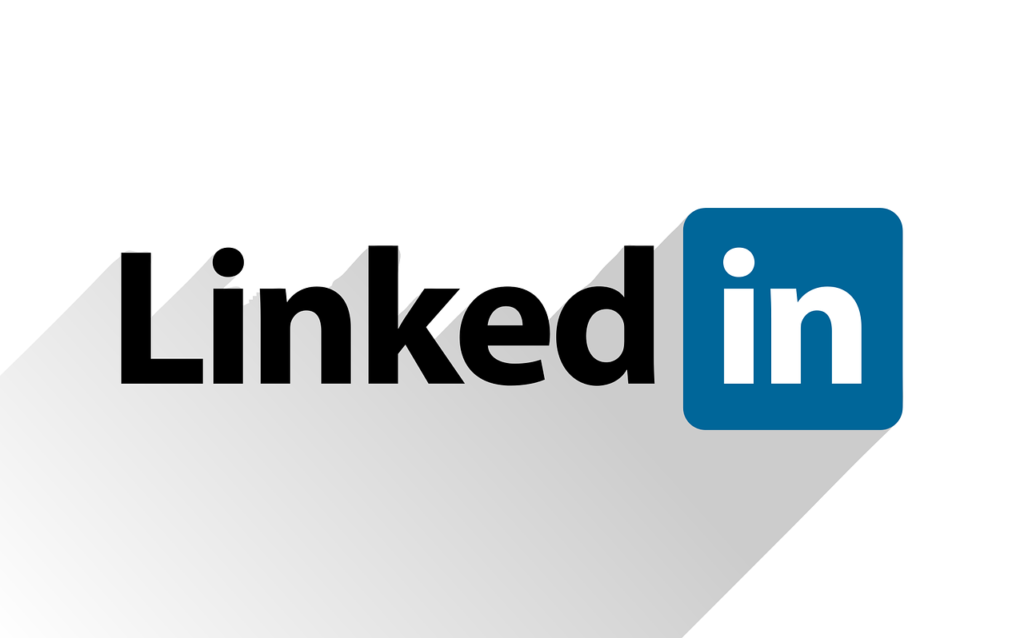
Building Professional Networks
One of LinkedIn’s most significant advantages is its ability to help professionals build and expand their networks. In healthcare, where trust and credibility are paramount, having a robust professional network can enhance your reputation.
When you connect with other healthcare professionals, patients, and industry experts, you increase your online visibility. These connections often lead to more profile views, endorsements, and recommendations, all of which contribute to your credibility.
Sharing Valuable Content
Content is king in the world of SEO, and LinkedIn is an excellent platform for sharing high-quality content. By regularly posting articles, updates, and insights relevant to your field, you can establish yourself as a thought leader.
This not only boosts your professional reputation but also drives traffic to your website. When you share content that resonates with your audience, it gets shared further, increasing its reach and impact.
Enhancing Your Profile
A well-optimized LinkedIn profile can significantly impact your SEO efforts. Your profile serves as a mini-website that search engines can index. By using relevant keywords in your profile summary, job descriptions, and skills, you can improve your visibility in search engine results.
Moreover, a complete and detailed profile increases the likelihood of your profile appearing in LinkedIn searches, further enhancing your online presence.
Gaining Backlinks
Backlinks, or inbound links, are crucial for SEO. They signal to search engines that your content is valuable and trustworthy. LinkedIn can be a powerful source of high-quality backlinks.
When you publish articles on LinkedIn, you can include links to your website. Additionally, when others share your LinkedIn posts or articles, they often link back to your profile or website, providing valuable backlinks.
Engaging with Your Audience
Engagement is a critical factor in SEO. The more people interact with your content, the more search engines consider it valuable. LinkedIn provides various ways to engage with your audience, from liking and commenting on posts to participating in group discussions.
By actively engaging with your connections, you can increase the visibility of your profile and content, driving more traffic to your website.
Boosting Local SEO
For healthcare professionals, local SEO is particularly important. Patients often search for healthcare providers within their vicinity. LinkedIn can help improve your local SEO by allowing you to list your location in your profile and posts.
When potential patients search for healthcare providers in their area, a well-optimized LinkedIn profile can make you more discoverable.
Comparison: LinkedIn vs. Other Social Media Platforms in Healthcare SEO
When it comes to leveraging social media for SEO, healthcare professionals have several options, including Facebook, Twitter, Instagram, and LinkedIn. Each platform offers unique advantages, but LinkedIn stands out for several reasons.
Professional Focus
Unlike other social media platforms, LinkedIn is specifically designed for professional networking. This focus makes it an ideal platform for healthcare professionals who want to build their reputation and connect with peers.
While Facebook and Twitter are excellent for engaging with a broader audience, LinkedIn provides a more targeted approach, allowing you to reach individuals who are specifically interested in healthcare.
Content Longevity
Content on LinkedIn tends to have a longer lifespan compared to other social media platforms. While a tweet might disappear in the noise within minutes, a LinkedIn article can continue to attract views and engagement for weeks or even months.
This extended visibility is crucial for SEO, as it allows your content to generate sustained traffic to your website.
Quality of Connections
Connections on LinkedIn are typically more meaningful and professional. When you connect with someone on LinkedIn, it’s often based on mutual professional interests or goals.
This quality of connections is beneficial for building a strong network and enhancing your professional reputation. In contrast, connections on other social media platforms may be more casual and less relevant to your professional goals.
Analytical Insights
LinkedIn offers robust analytical tools that allow you to track the performance of your posts and articles. These insights can help you understand what type of content resonates with your audience, enabling you to refine your content strategy.
While other platforms also offer analytics, LinkedIn’s tools are specifically tailored for professional content, providing more relevant data for healthcare professionals.
Trust and Credibility
As a platform dedicated to professional networking, LinkedIn inherently carries a higher level of trust and credibility. Profiles on LinkedIn are typically more detailed and verified, reducing the likelihood of encountering fake accounts or spam. This trust is particularly important in the healthcare industry, where credibility and authenticity are paramount.
LinkedIn Profile Optimization for Healthcare Professionals

Crafting a Compelling Profile Summary
Your LinkedIn profile summary is the first thing visitors see, and it plays a crucial role in making a strong impression. For healthcare professionals, a compelling summary should convey your expertise, passion for healthcare, and the unique value you offer to patients and peers.
Use clear, concise language and incorporate relevant keywords that potential patients or colleagues might use when searching for healthcare services or expertise.
Highlight your specialties, years of experience, and any notable achievements or certifications. Personalize your summary by sharing your journey in the healthcare field, explaining what drives you, and how you strive to make a difference in patients’ lives.
Detailing Your Experience and Skills
A detailed experience section not only showcases your professional journey but also helps in SEO. Each position you list provides an opportunity to use specific keywords related to your expertise and services. Describe your roles comprehensively, focusing on responsibilities and accomplishments that highlight your skills and contributions.
If you have worked in different healthcare settings, emphasize the diversity of your experience. Including specific skills, such as patient care, medical research, or healthcare management, also improves your profile’s visibility in search results.
Showcasing Certifications and Education
Certifications and education are critical components of a healthcare professional’s profile. They establish your credibility and expertise. Ensure that all relevant certifications, licenses, and educational qualifications are listed in detail.
Include the names of institutions, the duration of the courses, and any honors or distinctions received. These details not only add to your profile’s credibility but also incorporate additional keywords that can enhance your SEO.
Highlighting Publications and Research
If you have published articles, conducted research, or contributed to healthcare journals, make sure to showcase these accomplishments on your LinkedIn profile. Publications and research are significant indicators of expertise and thought leadership.
Describe the topics, findings, and the impact of your work. Include links to the publications if available, as this can drive traffic to your articles and further establish your authority in the field.
Engaging with Endorsements and Recommendations
Endorsements and recommendations from colleagues and patients add a layer of trust and validation to your profile. Encourage peers and patients to endorse your skills and write recommendations.
Authentic testimonials and endorsements enhance your credibility and can influence potential patients’ decisions. They also provide additional content that incorporates keywords relevant to your services and expertise, boosting your profile’s SEO.
Leveraging LinkedIn for Content Marketing in Healthcare
Creating Informative Articles
LinkedIn allows you to publish articles directly on the platform, providing a valuable opportunity to share your expertise. Writing informative articles on healthcare topics can position you as a thought leader.
Choose topics that address common patient concerns, advancements in medical treatments, or insights into healthcare trends. Use simple, engaging language to make the content accessible to a broad audience.
Including relevant keywords naturally within the content helps improve the SEO of both your LinkedIn profile and your website, if linked.
Sharing Updates and Insights
Regularly sharing updates and insights on LinkedIn keeps your profile active and engages your network. These posts can include news about your practice, health tips, patient success stories, or commentary on healthcare industry developments.
When sharing updates, aim to provide value to your audience. For instance, you might post about the latest research in your field and explain its implications for patient care. These posts can drive engagement, leading to more profile views and interactions, which positively impact your SEO.
Engaging with Visual Content
Visual content, such as images, infographics, and videos, can significantly enhance your LinkedIn presence. In healthcare, visual content can be particularly impactful in explaining complex medical concepts or showcasing patient testimonials. Create and share high-quality visuals that provide value and information.
For example, an infographic about managing chronic illnesses or a video explaining a new treatment procedure can attract considerable attention. Visual content is more likely to be shared, increasing its reach and driving more traffic to your profile and website.
Participating in LinkedIn Groups
LinkedIn groups provide a platform for engaging with peers and discussing industry-specific topics. Join groups related to your area of expertise and actively participate in discussions. Share your knowledge, ask questions, and provide answers.
This not only enhances your visibility within the professional community but also drives traffic to your profile. Participating in groups can lead to increased connections, endorsements, and engagement, all of which contribute to improving your SEO.
Utilizing LinkedIn Analytics
Understanding how your content performs on LinkedIn is crucial for refining your strategy. LinkedIn provides analytics tools that offer insights into the reach and engagement of your posts. Regularly review these metrics to understand what type of content resonates most with your audience.
Adjust your content strategy based on these insights to maximize engagement and drive more traffic to your profile. Higher engagement signals to search engines that your content is valuable, positively impacting your SEO.
Building Thought Leadership on LinkedIn

Hosting Webinars and Live Sessions
Hosting webinars and live sessions on LinkedIn is an effective way to engage with your audience in real-time. Choose topics that are relevant and beneficial to your audience, such as new healthcare developments, patient care tips, or wellness strategies.
Promote these events through your LinkedIn profile and other social media channels to attract a larger audience. During these sessions, encourage interaction by answering questions and engaging in discussions. These live interactions can significantly boost your visibility and establish you as a thought leader in your field.
Publishing Case Studies and Whitepapers
Publishing case studies and whitepapers on LinkedIn can demonstrate your expertise and the tangible impact of your work. Case studies that detail successful treatments or innovative procedures provide valuable insights and establish your authority.
Whitepapers on healthcare trends, research findings, or policy recommendations can also attract attention from peers and potential patients. Make sure these documents are well-researched and professionally written.
Including them in your LinkedIn profile not only showcases your expertise but also enhances your SEO through keyword-rich, authoritative content.
Engaging in Thoughtful Commentary
Commenting thoughtfully on industry news and peers’ posts is another way to build thought leadership. When you engage in discussions, provide insights or alternative perspectives that add value to the conversation.
This demonstrates your expertise and willingness to engage with the professional community. Thoughtful comments are often noticed by others in the network, leading to more connections and interactions. Increased engagement boosts your profile’s visibility and contributes to better SEO.
Networking with Influencers
Connecting with influencers in the healthcare industry can amplify your reach and credibility. Identify key influencers whose content aligns with your expertise and interests. Engage with their posts, share their content, and build relationships through meaningful interactions.
Collaborating with influencers on projects, articles, or webinars can also expand your audience and enhance your reputation. These relationships often lead to more profile views and connections, which positively impact your SEO.
Optimizing LinkedIn for Local SEO in Healthcare
Adding Location Information
Including detailed location information in your LinkedIn profile is essential for local SEO. List your practice’s address, city, and region accurately. This helps search engines associate your profile with local search queries.
When patients search for healthcare providers in their area, your profile is more likely to appear in the results. Make sure your contact information is up-to-date and easily accessible.
Engaging with Local Community Content
Engaging with content related to your local community can enhance your local SEO. Share and comment on posts about local health events, community health initiatives, or local news that impacts healthcare.
Participating in local discussions and highlighting your involvement in community activities can increase your visibility among local patients. This engagement signals to search engines that you are an active participant in the local community, improving your local SEO.
Encouraging Patient Reviews
Patient reviews are a powerful tool for local SEO. Encourage satisfied patients to leave reviews on your LinkedIn profile. Positive reviews not only enhance your credibility but also improve your profile’s visibility in local search results.
Respond to reviews professionally and thank patients for their feedback. Engaging with reviews demonstrates your commitment to patient satisfaction and can attract more local patients.
Highlighting Local Partnerships
If you have partnerships with local businesses, clinics, or organizations, highlight these collaborations on your LinkedIn profile. Describe how these partnerships benefit the local community and improve patient care.
Mentioning local partners and tagging them in posts can increase your profile’s visibility among their followers. This mutual engagement can drive more local traffic to your profile and improve your local SEO.
Participating in Local Groups and Events
Joining and participating in local LinkedIn groups focused on healthcare or community issues can enhance your local presence. Share your expertise, post about your involvement in local events, and engage with other group members.
Attending local events, such as health fairs or community health screenings, and sharing your experiences on LinkedIn also boost your local visibility. These activities demonstrate your active role in the community and can improve your local SEO.

Creating High-Quality Backlinks through LinkedIn
Publishing Original Research and Articles
Publishing original research and articles on LinkedIn can generate high-quality backlinks to your website. When your content provides valuable insights or groundbreaking findings, it is likely to be referenced by other professionals, blogs, and websites.
Make sure your articles are well-researched, comprehensive, and provide clear takeaways. Include links to your website within the article to direct readers to your original content or related resources. This not only drives traffic but also helps in building authoritative backlinks that enhance your SEO.
Guest Blogging and Cross-Promotions
Collaborating with other healthcare professionals or organizations for guest blogging and cross-promotions can also generate valuable backlinks. Reach out to colleagues and offer to write guest posts for their LinkedIn profiles or blogs, and invite them to do the same for yours.
Ensure that the content you share is relevant and adds value to their audience. Include links back to your website and social media profiles. These collaborative efforts increase your content’s reach and generate backlinks that boost your SEO.
Engaging with Influencers and Thought Leaders
Building relationships with influencers and thought leaders in the healthcare industry can lead to opportunities for backlinks. Engage with their content by commenting thoughtfully, sharing their posts, and participating in discussions.
When you have established a rapport, you can propose collaborations or ask them to reference your research or articles in their content. Influencers often have a wide reach and high authority, making backlinks from their profiles particularly valuable for SEO.
Sharing Case Studies and Patient Stories
Sharing detailed case studies and patient stories on LinkedIn can attract attention from other healthcare professionals and organizations. These narratives provide practical insights and showcase the impact of your work.
When others find your case studies valuable, they are likely to reference them in their own content, providing backlinks to your profile or website. Ensure that these stories are well-documented, anonymize patient details to maintain confidentiality, and include clear results and learnings.
Leveraging LinkedIn Groups for Backlink Opportunities
Participating in LinkedIn groups relevant to your field can open up opportunities for backlinks. Share your articles, research, and insights in group discussions. Provide links to your website when it is relevant to the conversation, ensuring that you are adding value rather than merely promoting yourself.
Active participation in these groups can position you as an expert, leading others to reference your content and create backlinks to your profile or site.
Using LinkedIn Analytics to Refine Your SEO Strategy

Understanding Audience Engagement
LinkedIn analytics provides valuable insights into how your audience interacts with your content. By examining metrics such as likes, shares, comments, and profile views, you can gauge which topics and formats resonate most with your audience.
Use these insights to refine your content strategy, focusing on the types of posts that generate the most engagement. Higher engagement rates improve your visibility and attract more interactions, which are beneficial for SEO.
Tracking Post Performance
Analyze the performance of individual posts to identify patterns and trends. Look for posts that have high engagement and traffic. Examine the elements that contributed to their success, such as the topic, format, time of posting, and use of visuals.
Use this information to replicate successful strategies in future posts. Consistently high-performing content signals to search engines that your profile is a valuable resource, enhancing your SEO.
Monitoring Follower Growth
LinkedIn analytics allows you to track the growth of your followers over time. Monitor trends in follower growth to understand the impact of your content and engagement efforts. Rapid increases in followers often coincide with successful content campaigns or high-profile interactions.
Use this data to identify and repeat effective strategies. A growing follower base increases your reach and the potential for backlinks and engagement, all of which contribute to better SEO.
Identifying Demographics and Interests
Understanding the demographics and interests of your LinkedIn audience can help tailor your content to their preferences. Analytics provide details on the industries, job functions, and locations of your followers.
Use this information to create content that addresses the specific needs and interests of your audience. Tailored content is more likely to engage your followers and attract interactions, boosting your visibility and SEO.
Refining Content Strategies
Regularly review LinkedIn analytics to refine your content strategies. Experiment with different types of content, such as articles, videos, and infographics, and monitor their performance.
Adjust your posting schedule based on when your audience is most active. By continually refining your approach based on analytics, you can maximize engagement and improve your profile’s SEO over time.
LinkedIn’s Role in Healthcare Thought Leadership
Establishing Your Authority
LinkedIn is a powerful platform for establishing yourself as a thought leader in healthcare. Consistently share valuable content, such as articles, research findings, and expert opinions, to build your authority.
Engage with your network by commenting on relevant posts and participating in discussions. Thought leadership not only enhances your professional reputation but also drives more traffic to your profile and website, positively impacting your SEO.
Engaging in Industry Discussions
Participating in industry discussions on LinkedIn helps you stay informed about the latest trends and developments in healthcare. Engage in meaningful conversations by sharing your insights and perspectives.
This positions you as a knowledgeable and active participant in the industry, attracting attention from peers and potential followers. Increased engagement in these discussions enhances your visibility and credibility, contributing to better SEO.
Sharing Educational Content
Educational content is highly valued in the healthcare industry. Share posts that provide practical advice, explain complex medical concepts, or offer health tips. Use simple, clear language to make your content accessible to a broad audience.
Educational content is more likely to be shared and referenced, increasing its reach and generating backlinks to your profile and website, which benefits your SEO.
Hosting Educational Webinars
Hosting educational webinars on LinkedIn can further establish your thought leadership. Choose topics that address common questions or challenges faced by your audience. Promote your webinars through LinkedIn posts and direct messages to attract attendees.
During the webinar, provide valuable insights and engage with participants through Q&A sessions. Recorded webinars can be shared as posts, extending their reach and impact. These activities drive engagement and traffic, improving your SEO.
Networking with Other Thought Leaders
Connecting with other thought leaders in the healthcare industry can amplify your reach and influence. Engage with their content, collaborate on projects, and participate in joint discussions.
These interactions expose you to their network, increasing your visibility. Mutual endorsements and collaborations with respected peers enhance your credibility and can lead to valuable backlinks, boosting your SEO.
LinkedIn Strategies for Healthcare Practices

Highlighting Patient Success Stories
Sharing patient success stories on LinkedIn is a powerful way to connect with your audience and demonstrate the impact of your practice. These stories highlight real-life examples of how your services have made a difference in patients’ lives.
Make sure to obtain patient consent and anonymize details as needed. Detailed success stories provide compelling content that engages your audience and can be shared widely, driving traffic to your profile and website and enhancing your SEO.
Showcasing New Treatments and Services
Regularly update your LinkedIn profile and posts with information about new treatments and services offered by your practice. Highlight the benefits and unique aspects of these treatments.
Use simple, clear language to explain how these services can help potential patients. Visual content, such as before-and-after photos or demonstration videos, can be particularly effective. These updates keep your profile current and relevant, attracting engagement and improving your SEO.
Engaging with Patient Reviews
Actively engage with patient reviews on LinkedIn. Thank patients for their feedback and address any concerns professionally. Positive reviews build trust and credibility, while thoughtful responses to negative reviews demonstrate your commitment to patient satisfaction.
Encouraging patients to leave reviews and engaging with them can enhance your profile’s visibility in search results, benefiting your SEO.
Promoting Health Awareness Campaigns
Promote health awareness campaigns and initiatives on LinkedIn. Share posts about national health observances, local health events, or health tips. These posts demonstrate your commitment to community health and position your practice as a valuable health resource.
Engaging with these campaigns increases your visibility and can attract more followers and engagement, which are beneficial for SEO.
Collaborating with Local Businesses
Collaborating with local businesses and organizations can enhance your LinkedIn presence. Highlight these partnerships in your posts and profile. Describe how these collaborations benefit the local community and improve patient care. Engaging with local partners can drive more local traffic to your profile and website, improving your local SEO.
LinkedIn Advertising for Healthcare SEO
Targeting the Right Audience
LinkedIn’s advertising platform allows you to target specific audiences with precision. For healthcare professionals, this means reaching out to individuals who are most likely to benefit from your services. Use LinkedIn’s targeting options to narrow down your audience based on factors such as location, job title, industry, and interests.
This ensures that your ads are seen by people who are genuinely interested in healthcare services, increasing the chances of engagement and conversions. A well-targeted ad campaign drives traffic to your profile and website, boosting your SEO.
Creating Compelling Ad Content
The content of your LinkedIn ads plays a crucial role in capturing the attention of your target audience. Create ads that are visually appealing and contain clear, concise messaging. Highlight the unique benefits of your healthcare services and include a strong call to action. Use high-quality images or videos to make your ads stand out.
Ensure that the ad content is relevant to your target audience’s needs and interests. Compelling ad content not only attracts clicks but also encourages users to engage with your profile and website, enhancing your SEO.
Utilizing Sponsored Content
Sponsored content on LinkedIn allows you to promote your posts to a wider audience beyond your immediate network. This is particularly useful for healthcare professionals looking to increase the reach of their content. Promote posts that provide valuable information, such as articles, research findings, or health tips.
Sponsored content appears in the LinkedIn feeds of your target audience, increasing visibility and engagement. By driving more traffic to your profile and website through sponsored content, you improve your SEO.
Measuring Ad Performance
Tracking the performance of your LinkedIn ads is essential for optimizing your campaigns and maximizing ROI. Use LinkedIn’s analytics tools to monitor metrics such as click-through rates, engagement rates, and conversions. Analyze which ads perform best and adjust your strategy accordingly.
Understanding what resonates with your audience allows you to create more effective ads in the future. Consistently high-performing ads drive more traffic and engagement, positively impacting your SEO.
Retargeting for Better Engagement
LinkedIn’s retargeting capabilities enable you to re-engage with users who have previously interacted with your profile or website. Retargeting ads remind these users of your services, encouraging them to return and take action.
This is particularly effective for healthcare professionals, as patients often take time to make decisions about their healthcare needs. Retargeting keeps your practice top-of-mind and increases the likelihood of conversions.
Higher engagement rates from retargeting campaigns boost your SEO by driving more consistent traffic to your website.
Leveraging LinkedIn Groups for Community Building
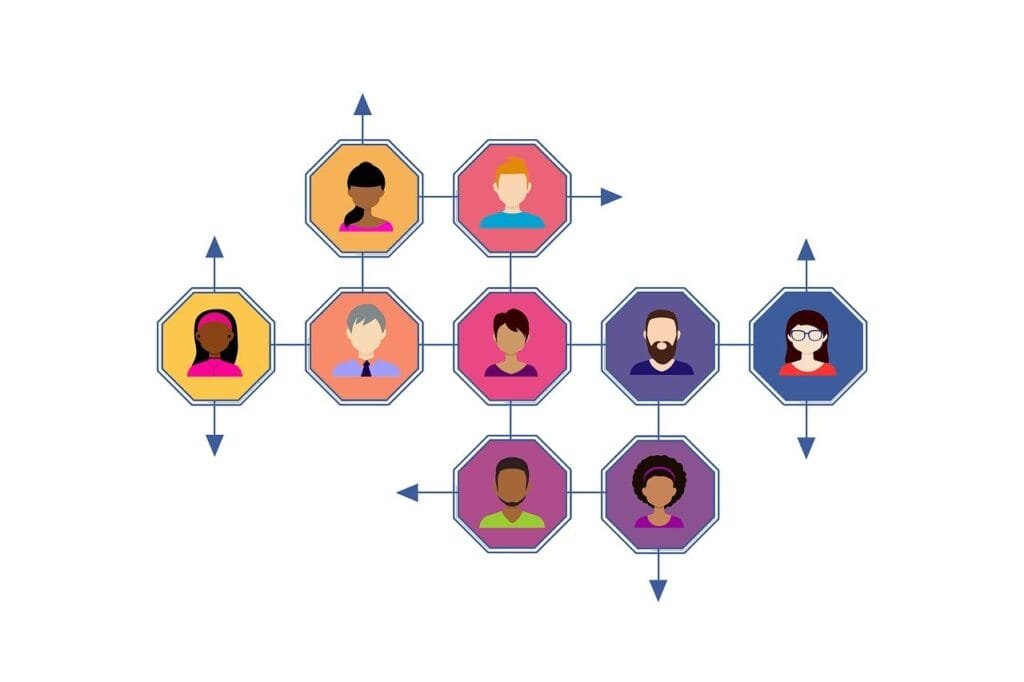
Joining Relevant Groups
LinkedIn groups provide a platform for healthcare professionals to connect with peers, share knowledge, and stay updated on industry trends. Join groups that are relevant to your field of expertise and interests.
Participate actively by sharing insights, asking questions, and contributing to discussions. Being part of these groups enhances your visibility within the professional community and helps build your reputation as a knowledgeable and engaged healthcare provider. Increased engagement in these groups drives traffic to your profile, improving your SEO.
Starting Your Own Group
Creating your own LinkedIn group allows you to establish a community around specific healthcare topics or interests. Invite colleagues, patients, and other professionals to join and participate. Use the group to share valuable content, host discussions, and organize virtual events.
Managing a group positions you as a thought leader and provides a platform to directly engage with your audience. Active participation in your group boosts your profile’s visibility and drives traffic to your website, enhancing your SEO.
Sharing Group-Specific Content
Tailoring your content to the interests of group members can increase engagement and participation. Share articles, research, case studies, and updates that are relevant to the group’s focus. Encourage members to share their own content and insights.
Group-specific content that resonates with members is more likely to be shared, extending its reach beyond the group. This increased visibility can drive more traffic to your profile and website, benefiting your SEO.
Facilitating Discussions
Initiate and facilitate discussions on current healthcare topics and challenges within your LinkedIn group. Pose thought-provoking questions, share your perspectives, and encourage members to contribute their views. Active discussions create a dynamic and engaging group environment.
They also provide valuable insights into the concerns and interests of your audience, which can inform your content strategy. Higher engagement levels within the group enhance your visibility and drive traffic to your profile and website, improving your SEO.
Hosting Virtual Events
Hosting virtual events, such as webinars, Q&A sessions, or panel discussions, can significantly boost engagement within your LinkedIn group. Choose topics that address common questions or challenges faced by your audience. Promote these events within the group and encourage members to invite their networks.
Virtual events provide a platform for real-time interaction and knowledge sharing. They also position you as a leader in the healthcare community. Recording and sharing these events extends their reach, driving more traffic to your profile and website, which benefits your SEO.
LinkedIn as a Tool for Professional Development in Healthcare
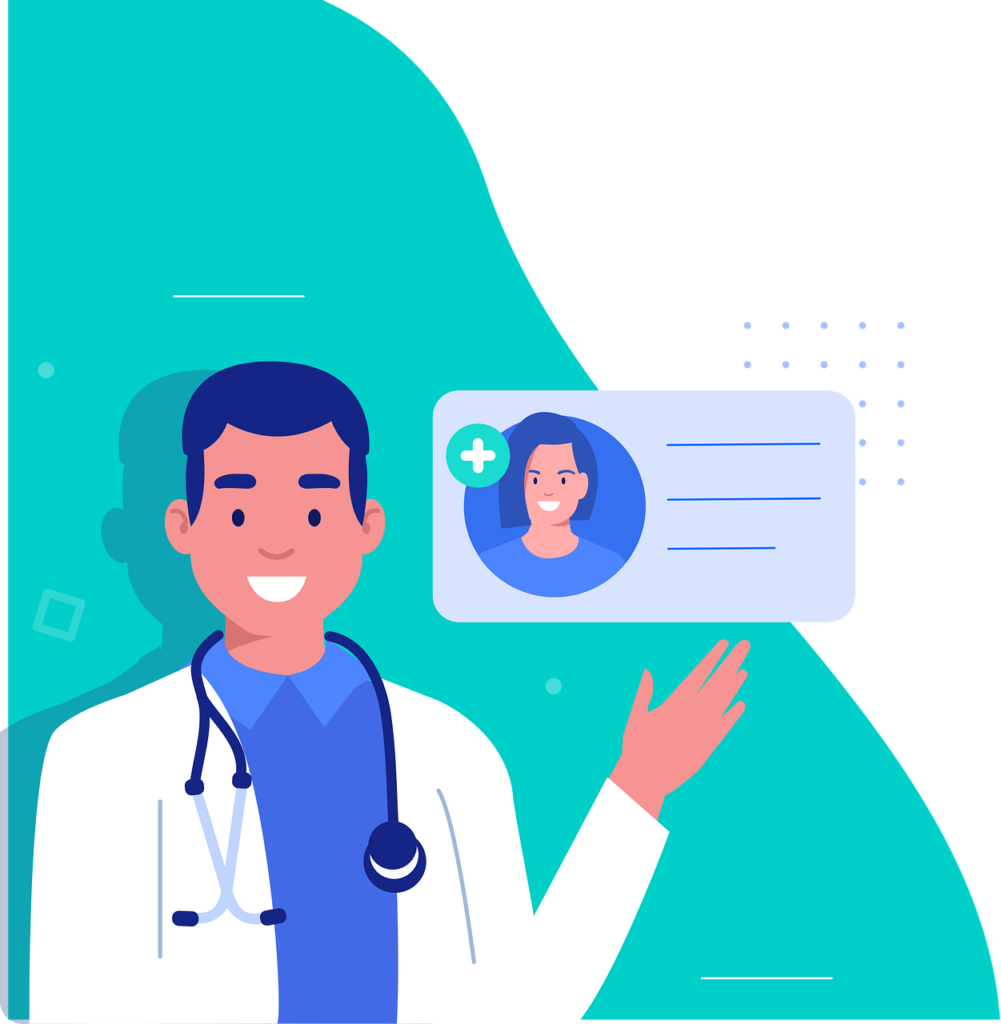
Following Industry Leaders and Organizations
Staying informed about the latest trends and developments in healthcare is crucial for professional growth. Follow industry leaders, organizations, and institutions on LinkedIn to keep up with their updates and insights.
Engage with their content by liking, sharing, and commenting on posts. This keeps you informed and visible within the professional community. Active engagement with industry leaders enhances your profile’s credibility and attracts more connections, boosting your SEO.
Participating in Continuing Education Programs
LinkedIn offers access to various continuing education programs and courses relevant to healthcare professionals. Enroll in these programs to enhance your skills and knowledge. Share your achievements and certifications on your profile to showcase your commitment to professional development.
Participating in these programs not only improves your expertise but also makes your profile more attractive to potential connections and employers. This increased visibility and engagement drive traffic to your profile, improving your SEO.
Attending Virtual Conferences and Webinars
Virtual conferences and webinars provide opportunities for learning and networking. Attend these events to gain insights from industry experts and connect with other professionals. Share your experiences and key takeaways on LinkedIn to engage your network.
Posting about your participation in these events highlights your dedication to staying informed and involved in the healthcare community. Increased engagement from these posts drives traffic to your profile, benefiting your SEO.
Engaging in Peer Mentorship
Engaging in peer mentorship, whether as a mentor or mentee, can enhance your professional development. Join mentorship programs or reach out to colleagues on LinkedIn for guidance and support. Share your experiences and insights with your network to demonstrate your commitment to professional growth.
Mentorship interactions often lead to meaningful connections and increased engagement. This enhanced visibility contributes to better SEO by driving more traffic to your profile and website.
Sharing Knowledge Through Articles and Posts
Contributing to the body of knowledge in your field by sharing articles and posts on LinkedIn can establish you as an expert. Write about your experiences, research findings, and insights into healthcare trends. Use clear, simple language to make your content accessible to a broad audience.
Sharing valuable knowledge not only enhances your reputation but also drives engagement and traffic to your profile and website. Higher engagement levels improve your SEO, making your content more discoverable.
LinkedIn Analytics: Tracking and Improving Your Impact
Monitoring Engagement Metrics
LinkedIn analytics provides detailed insights into how your content is performing. Regularly monitor metrics such as likes, shares, comments, and profile views to understand what resonates with your audience. High engagement rates indicate that your content is valuable and relevant.
Use these insights to refine your content strategy, focusing on topics and formats that drive the most interaction. Increased engagement signals to search engines that your profile is a valuable resource, enhancing your SEO.
Analyzing Follower Demographics
Understanding the demographics of your followers helps tailor your content to their interests and needs. LinkedIn analytics provides information on your followers’ industries, job titles, and locations. Use this data to create content that addresses their specific concerns and interests.
Tailored content is more likely to engage your audience, leading to higher interaction rates. This increased engagement drives more traffic to your profile and website, benefiting your SEO.
Evaluating Post Performance
Analyze the performance of individual posts to identify patterns and trends. Look for posts with high engagement and traffic. Examine the elements that contributed to their success, such as topic, format, time of posting, and use of visuals.
Use this information to replicate successful strategies in future posts. Consistently high-performing content boosts your profile’s visibility and attracts more interactions, improving your SEO.
Adjusting Content Strategy Based on Insights
Use the insights gained from LinkedIn analytics to adjust your content strategy. Experiment with different types of content, such as articles, videos, and infographics, and monitor their performance.
Adjust your posting schedule based on when your audience is most active. By continually refining your approach based on analytics, you can maximize engagement and improve your profile’s SEO over time.
Tracking Website Traffic from LinkedIn
LinkedIn analytics can help you track how much traffic your website receives from LinkedIn. Use this data to understand the effectiveness of your LinkedIn efforts in driving website visits.
Identify which posts or ads generate the most traffic and replicate their success. Increased website traffic from LinkedIn enhances your overall SEO, making your content more discoverable in search engine results.
Experts Opinion

When creating content for the healthcare and medical industries, you want to make sure it’s high-quality. Due to the nature of what you’re selling, you have to be highly sensitive to patients’ concerns. They may have life-altering conditions that need to be addressed. Any content you publish for SEO purposes needs to be highly researched. Back up your claims from experts within your industry. Be an authoritative source on preventative care, treatment options, and medical concerns. While positive reviews are always beneficial, they’re especially important for the healthcare and medical industries. Consumers are much more likely to try a product or service if it has a lot of positive testimonials. Spend a decent amount of time and money on accumulating these reviews and then leveraging them for SEO. This will not only boost your online reputation, but it will attract new clients.
Christy Pyrz CMO, Paradigm Peptides

As an expert in SEO within the healthcare and medical industry, I can provide you with insights into effective tactics and strategies. When it comes to search engine optimization for this industry, there are several key areas to focus on: 1. Content Optimization: Ensure that the content on your website is comprehensive, well-structured, and aligns with relevant keywords. Incorporate medical terminology, FAQs, and educational resources to cater to users seeking health-related information. 2. Local SEO: Optimize your website for local search by including accurate and consistent NAP (Name, Address, Phone number) information across all directories and listings. This helps improve visibility for local patients searching for medical services. 3. On-Page SEO: Pay attention to on-page optimization elements such as title tags, meta descriptions, header tags, and URL structure. Include relevant keywords in a natural and user-friendly way, while also enhancing readability and usability. 4. Mobile Optimization: Given the increase in mobile device usage, it’s crucial to prioritize mobile optimization. Ensure your website is mobile-friendly, loads quickly, and has a responsive design to provide a seamless browsing experience. 5. Backlink Building: Acquire high-quality backlinks from reputable sources within the medical field. Reach out to healthcare organizations, medical journals, and authoritative websites to gain valuable links that boost your website’s authority and credibility.
Anatolii Ulitovskyi Founder, Unmiss

One specific SEO tactic we use is focusing on long-tail keywords.- In the healthcare industry, people often search for specific conditions, symptoms, or treatments.
By targeting specific, less competitive long-tail keywords, you can attract highly relevant traffic. Another strategy is creating high-quality, medically accurate content. -We make sure our content is written or reviewed by medical professionals (if it has a tech or AI related aspect to it, then we co-author the content).
This not only builds trust with our audience but also increases our chances of earning backlinks from reputable healthcare websites, boosting our SEO. Recently, we have experimented with optimizing for voice search. As more people use voice assistants, we started incorporating more natural, conversational phrases into our content. – This approach has resulted in a noticeable increase in traffic.
Younes El Kacimi, founder of Wavalon.com

One of the key strategies I have successfully employed and highly recommend for boosting SEO in the healthcare and medical industry is content optimization. It’s crucial to develop authoritative articles, blog posts, and resources that cater to prevalent health concerns, medical procedures, and patient inquiries. Incorporate relevant keywords seamlessly, ensuring readability and accessibility for both users and search engines. Consistently updating and refreshing this content to reflect the latest medical advances and guidelines is essential. Additionally, I strongly recommend building authoritative backlinks from reputable healthcare websites to enhance your site’s credibility and improve search engine rankings, ultimately maximizing online visibility in this fiercely competitive sector.
Kevin Lamberth, General Manager of Central Carolina Scale
Conclusion
LinkedIn is an invaluable tool for healthcare professionals aiming to enhance their SEO. By optimizing your profile, sharing valuable content, engaging in professional groups, leveraging advertising, and using analytics to refine your strategy, you can significantly improve your online presence. LinkedIn’s unique professional focus allows healthcare professionals to build credibility, connect with peers, and attract potential patients effectively.
Consistent, high-quality engagement on LinkedIn drives traffic to your profile and website, improving search engine rankings. As the healthcare industry continues to evolve digitally, mastering LinkedIn can provide a competitive edge, making it an essential component of a successful healthcare SEO strategy.
READ NEXT:
- External Links and On-Page SEO: Quality Over Quantity
- 21 Best Ad Campaign Management Tools: Our Take
- Dental SEO: A Complete Guide
- E-commerce SEO: The Complete Guide
- How to Conduct a Website SEO Audit: The Complete Guide



















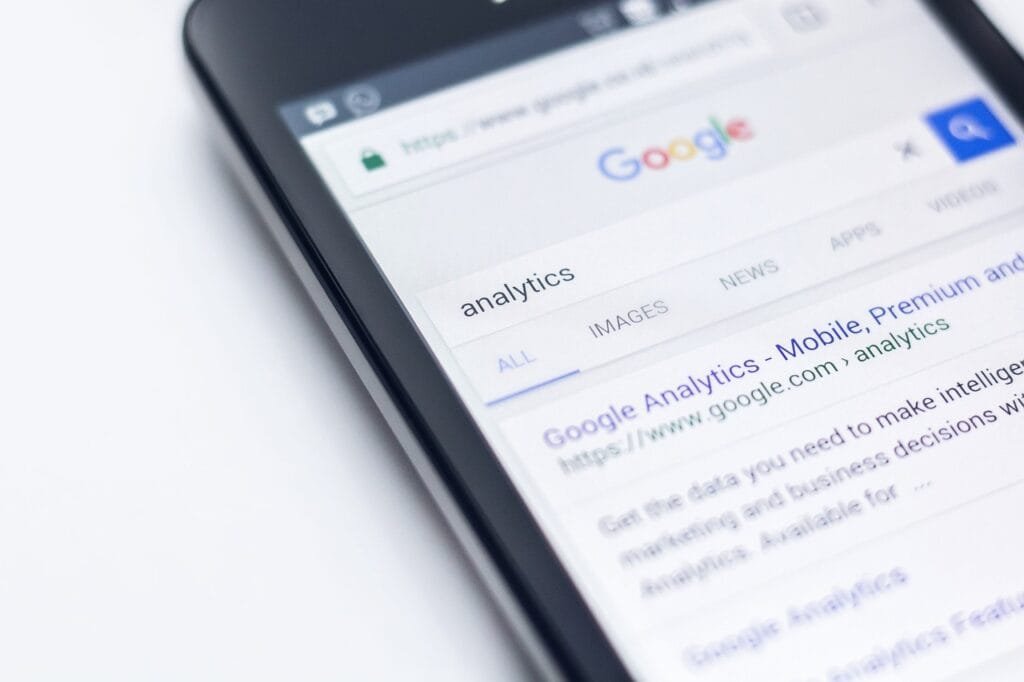
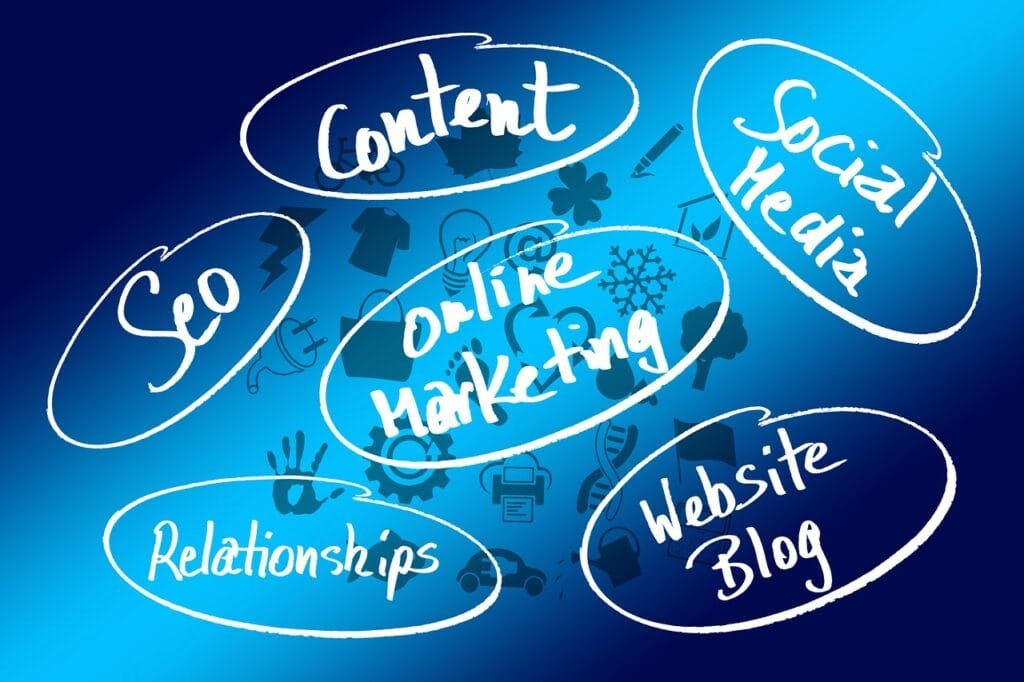

Comments are closed.